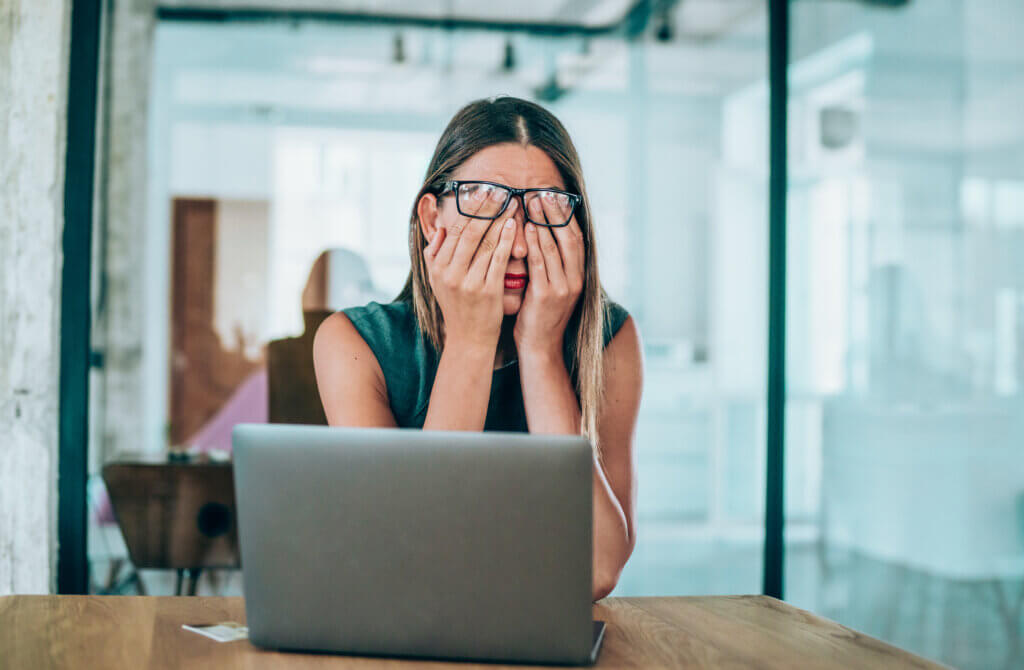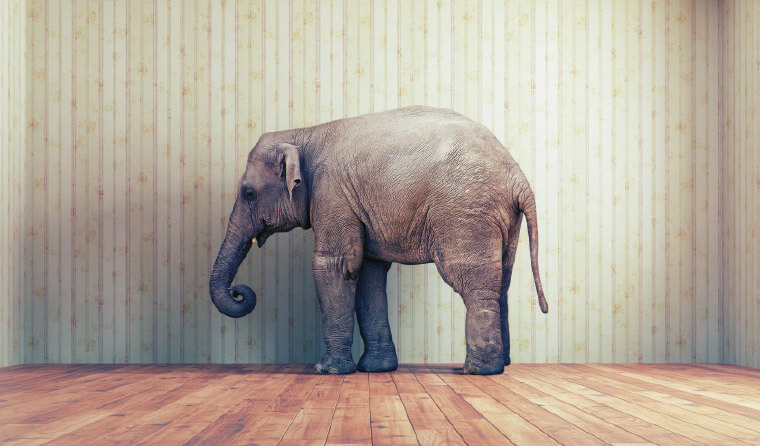Following years of successive crises – including natural disasters, pandemics, wars, cost-of-living pressures, and more – we are all now acutely aware of the devastating toll of psychological distress on individuals and communities. We are also becoming increasingly aware of the mental ill health toll in the workplace, with many employees experiencing depression, anxiety and burn-out.
What is far less acknowledged is the shortage of effective mental health solutions, particularly in the workplace. This is the real elephant in the room that is facing the business leaders of today.
According to Beyond Blue, 91% of employees say mentally healthy workplaces are important—yet only 56% believe it’s valued by their CEO. For business leaders, an opportunity exists now to lead the way by prioritising solutions that will result in best practice outcomes for mentally healthy workplaces.

The tsunami of mental illness and its impact on business
4.2 million Australians experienced a mental health disorder over a 12 month period during the height of the pandemic between 2020 and 2021, with anxiety and depression topping the list.
For businesses, research from the Productivity Commission’s 2020 Inquiry into Mental Health revealed that 2.8m working Australians have mental illness and require time off to maintain their wellbeing.
The Inquiry also found that poor mental health costs the economy up to $70 billion per year, and the average worker with mental ill health takes 10-12 days off per year, equating to a $10 billion loss annually due to absenteeism.
Presenteeism leads to reduced productivity in the workplace, and employees with mental health difficulties are estimated to experience 14-18 days of reduced productivity per year – resulting in an estimated cost of $7 billion per year.
Mental health claims are also rising sharply and tipped by some experts to be the predominant trigger for skyrocketing claim values. The cost of workers compensation claims for work-related mental health conditions are roughly 2.5 times higher than any other workers compensations (Median compensation paid for physical injuries and diseases was $13,883 versus $55,270 for mental health conditions according to recent data by Safe Work Australia). And according to a recent CEDA report, mental health claims are expected to at least double by 2030.

Lack of effective mental health solutions in the workplace
Over 50% of Australian workers experience mental health conditions, yet traditional employee assistance program (EAP) take-up rates are low with fewer than 1-3% of employees accessing existing programs in most workplace settings.
There is also limited data available on the effectiveness of existing EAPs – a 2015 OECD report found that although EAPs are widely used and seemingly valued by businesses and their employees, these programs are seldom evaluated based on their outcomes. Another 2015 report concluded that monitoring and evaluation of existing EAPs in Australia was insufficient, and patchy at best.
At the same time, there is a worrying shortage and demand for psychologists in the community setting, with reports that 1 in 3 psychologists are unable to see new patients, and wait lists are up to 1 year-long in some cases.
In addition, recent qualitative and quantitative independent research commissioned by Vitality Works demonstrates that there are significant barriers to, and concerns surrounding, traditional EAPs that need to be addressed:
- 1 in 3 of employees surveyed strongly agreed that, in the past year, stigma around accessing mental health services has reduced in their workplace.
- 1 in 4 employees said that they use mental health services without concern for what people might think.
- Many employees felt that their workplace took a ‘tick and flick’ approach to EAP services.
- Many employees agreed that the responsibility for managing mental health in the workplace should not fall on the individual alone.
This lack of limited and effective mental health solutions in the workplace is the new elephant in the boardroom, which we must call out and address now.

Best practice guide for a mentally healthy workplace
Creating a person-centred mental health system, getting people the right services at the right time, and improving continuity and coordination of care were among the priority reforms by the Productivity Commission’s 2020 Inquiry into Mental Health.
Workplace mental health services that only step in when a worker reaches crisis point or remain capped to a certain number of consultations per worker, fail to capture the many others who also need support. The Productivity Commission found that effective programs take a holistic mental health approach that encompasses awareness, prevention, and treatment.
In addition, while business owners and leaders have a moral obligation to provide a mentally healthy workplace, employers also have a legal obligation to minimise psychological hazards as per Safe Work Australia’s model Code of Practice for Managing psychosocial hazards at work, which was released in July 2022.
Against this context, and to assist our clients to address the shortcomings in traditional EAP, Vitality Works searched globally for a proven, holistic mental health solution to partner with, and we found Thrive UK.
Thrive is a healthcare-led mental health and workplace program that was developed by NHS clinicians Dr Adam Huxley and Dr Andres Fonseca who were frustrated by the inability to service their clients in a timely and scalable way. And we are proud to announce our exclusive joint venture to bring Thrive Mental Health to Australian and New Zealand businesses.

How is Thrive Mental Health revolutionising EAPs?
While every business and employer will have different requirements from a mental health solution, we partnered with Thrive UK because we were impressed with its health-focused origins, its mission-driven ethos, its proven track-record, and its evidence-based, clinically validated tools.
Thrive is a whole of workforce solution that offers unlimited access to real psychologists and uses clinically-validated methods to combine screening with triage, referral, and support.
Thrive also eclipses traditional models with usage rates 10x greater than standard EAPs (30% uptake for Thrive vs. 1-3% uptake for traditional EAP providers).
But more importantly, Thrive Mental Health leads to evidence-based health results. For example, a 2020 study of Thrive Mental Health showed participants using the app experienced significantly better rates of recovery from anxiety and depression after two weeks, four weeks and six weeks, compared to those people without any support, with recovery rates of up to 86% for depression and anxiety among Thrive users.
To learn more about Thrive visit Thrive Mental Health
Let’s connect
To find out more click below to book a 15 min chat or you can connect with Dr Sarah Curtis, Head of Health Promotion & Injury Prevention direct on:
m: 0408 533 207
e:sarah.curtis@vitalityworks.com.au




